Ford will invest $5 billion to set up its “Universal EV” program – and, it claims, completely transform the way vehicles are designed, engineered and manufactured. The test will come with the 2027 launch of a new, all-electric midsize pickup, said CEO Jim Farley, with a “targeted price of $30,000.” But there could be a cost in terms of long-term automotive employment, reports Headlight.News.

The new project gets a new logo retaining Ford’s classic blue color but swapping out the familiar oval shape.
He called it “the moving assembly line” and, at first, it simply meant tying ropes from one partially assembled Model T body to the next, winding them through the old plant in Highland Park, Michigan as workers added more parts, one at a time. That 1913 development transformed the auto industry and, at least for a time, made Ford the world’s number one automotive manufacturer.
Today, Ford is struggling to position itself as one of the global leaders in the emerging EV market and it’s once again looking to transform the way automobiles are designed, engineered and manufactured. On Monday CEO Jim Farley offered a closer look at the “skunkworks” program triggered three years ago, suggesting “We gave them the keys to the kingdom.”
The project’s initial effort will make its debut in 2027 with the launch of an all-new, midsize battery-electric pickup with a “targeted price of $30,000.” At least two SUVs will soon follow. The “Universal EV” project could lead to radical changes across Ford Motor Co. – and even its competitors. But that could carry a cost in terms of automotive employment.
What is Ford up to?
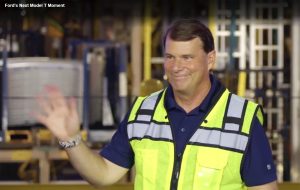
“This “represents the most radical change in how we design and how we build vehicles at Ford since the Model T,” said Ford CEO Jim Farley.
Ford currently has three EVs in production: the F-150 Lightning pickup, the Mustang Mach-E SUV and the E-Transit commercial van. It was working up several other products, including a pair of three-row EVs, when CEO Jim Farley pulled the plug last year. Farley decided that Ford needed to focus on more affordable EVs if it was to gain a leg up – especially against the Chinese domestic brands, like BYD and Geely, rapidly gaining market share around the world.
He responded by setting up a skunkworks, similar to what Lockheed has long used to craft radical new aerospace concepts like the U-2 and SR-71 spy planes. And it was moved to Long Beach, California, to insulate it from Ford’s existing operations. The fast-moving project has now come up with a radical new way of both engineering EVs, as well as manufacturing them, Farley announced Monday during a news conference at Ford’s big assembly plant in Louisville, Kentucky. That plant will be the centerpiece of the $5 billion project, along with the new BlueOval Battery Park in Marshall, Michigan.
“We took a radical approach to a very hard challenge: Create affordable vehicles that delight customers in every way that matters – design, innovation, flexibility, space, driving pleasure, and cost of ownership – and do it with American workers,” Farley said.
The Universal EV
Ford’s “Universal Vehicle” isn’t some science fiction project. It won’t lift off the ground and fly like the flying cabs some companies are working on. But it does make substantial changes in key areas which, Farley claimed, can sharply reduce production costs while also improving reliability.
To meet its goal of slashing costs, Ford’s team started essentially from scratch. A key target was reducing the number of parts used in a vehicle. One approach was to turn to large single-piece aluminum unicastings which “replace dozens of smaller parts,” Ford explained. Overall the new EVs will have 20% fewer parts than traditional models, require 25% fewer fasteners and there will be 40% fewer workstations in the plant.
Ford has also migrated to a centralized computing system and electrical architecture. That allows the automaker to eliminate 4,000 feet of wire in the wiring harness, shaving about 22 pounds of mass. That not only reduces production complexity but slashes costs at a time when copper prices are soaring — and are expected to go even higher, with Pres. Donald Trump set to enact a 50% tariff on imports of the metal. The U.S. gets half of its copper from abroad.
More Ford News
- Ford Pushes Back Replacements for F-150 Lightning, E-Transit
- Ford Has a “Model T Moment” Coming, Says CEO Farley
- Ford Sets Auto Industry Recall Record
The Ford Universal Production System
One of the most dramatic changes Ford has come up with could be seen as the most dramatic shift in assembly line design since Henry Ford launched his first back in 1913. Rather than running a single line where most, if not all, vehicle production is completed one step at a time, the Ford Universal Production System creates what it’s calling an “assembly tree.”
Three sub-assemblies run essentially parallel to one another. One focuses on the front end of the vehicle, another the back end. The third assembles the battery pack which, here becomes a rigid, structural part of the vehicle. Also, the vehicle load floor is built into the pack, along seats, carpets and interior consoles.
Ford claims this approach will speed up the production process by as much as 40%, though it will add other operations to the Louisville plant normally done elsewhere. In the end, that still should yield a 15% improvement in productivity, said Bryce Currie, Ford vice president, Americas Manufacturing. “We expect ergonomic breakthroughs and complexity reduction – through elimination of parts, connectors and wire – will flow through to significant quality and cost wins.”
Job cuts
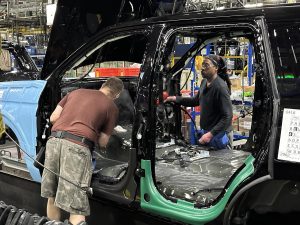
Ford officials confirmed they expect fewer employees will be needed on assembly lines using the new Universal production system.
There is a price for this when it comes to employment. At least initially, Ford expects to “create or secure” about 4,000 jobs as part of the $5 billion program. Currently, there are 2,800 employees at the Louisville Assembly Plant alone, a figure which spokesman Mark Truby said will drop to 2,200. There will be buyouts offered, he noted, though some Louisville employes may chose to move to other Ford facilities. The rest of the jobs will be created at a new, $3 billion BlueOval Battery Plant going into Marshall, Michigan.
Ford officials declined to discuss production volumes for the program but did note that there could be an upside, with room in Louisville to expand output should demand support it. That’s a big question, however, at a time when EV sales growth has stuttered amidst a number of steps taken under Pres. Donald Trump – such as ending federal EV tax credits next month.
Farley has noted on several occasions that EVs could lead to broad reductions in hourly employment across the auto industry. How much more jobs will be lost at Ford is uncertain. Doug Field, the head of the automaker’s EV program, noted that Ford will attempt to use its new Universal EV model for the development of future vehicles – though it will be only marginally applicable to gas-powered vehicles, as well as body-on-frame products, like the F-150.
What is Ford going to build in Louisville?
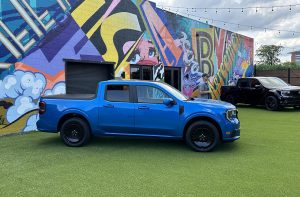
The new EV pickup will have a footprint about the size of this Ford Maverick, but a midsize interior.
At launch in 2027, Ford plans to start rolling out an all-electric pickup. According to Alan Clarke, a former Tesla executive now leading Ford’s Advanced EV Development team, it will fall into the midsize category – though it actually will have an exterior footprint closer to that of a compact Ford Maverick but “more interior space than a (Toyota) RAV4,” he explained. It also will have a frunk and cargo bed.
Significantly, Ford isn’t planning to turn out an econobox at Louisville. “This is not going to be a stripped-down old school vehicle as a path to low cost,” Field emphasized. Among other things, he hinted, it will get higher-end features, such as Ford’s hands-free SuperCruise system.
Notably, the pickup and other Universal EV models will use lithium-iron phosphate batteries, rather than today’s more common lithium-ion chemistry. But officials indicated they expect range to be comparable to today’s comparable EVs through cutting vehicle mass and maximizing aerodynamics. LFP chemistry is key to holding down costs, coming in substantially less than lithium-ion. Field did suggest other battery chemistries could be adapted in the future.
As to other products, the Universal EV Platform, meanwhile, will have the capability of being stretched or compressed in every dimension. Ford indicates the truck will be followed by various two- and three-row EVs, for starters. And “We’re working on everything from vans to SUVs down to B-segment vehicles,” added Doug Fields, head of EV operations at Ford.

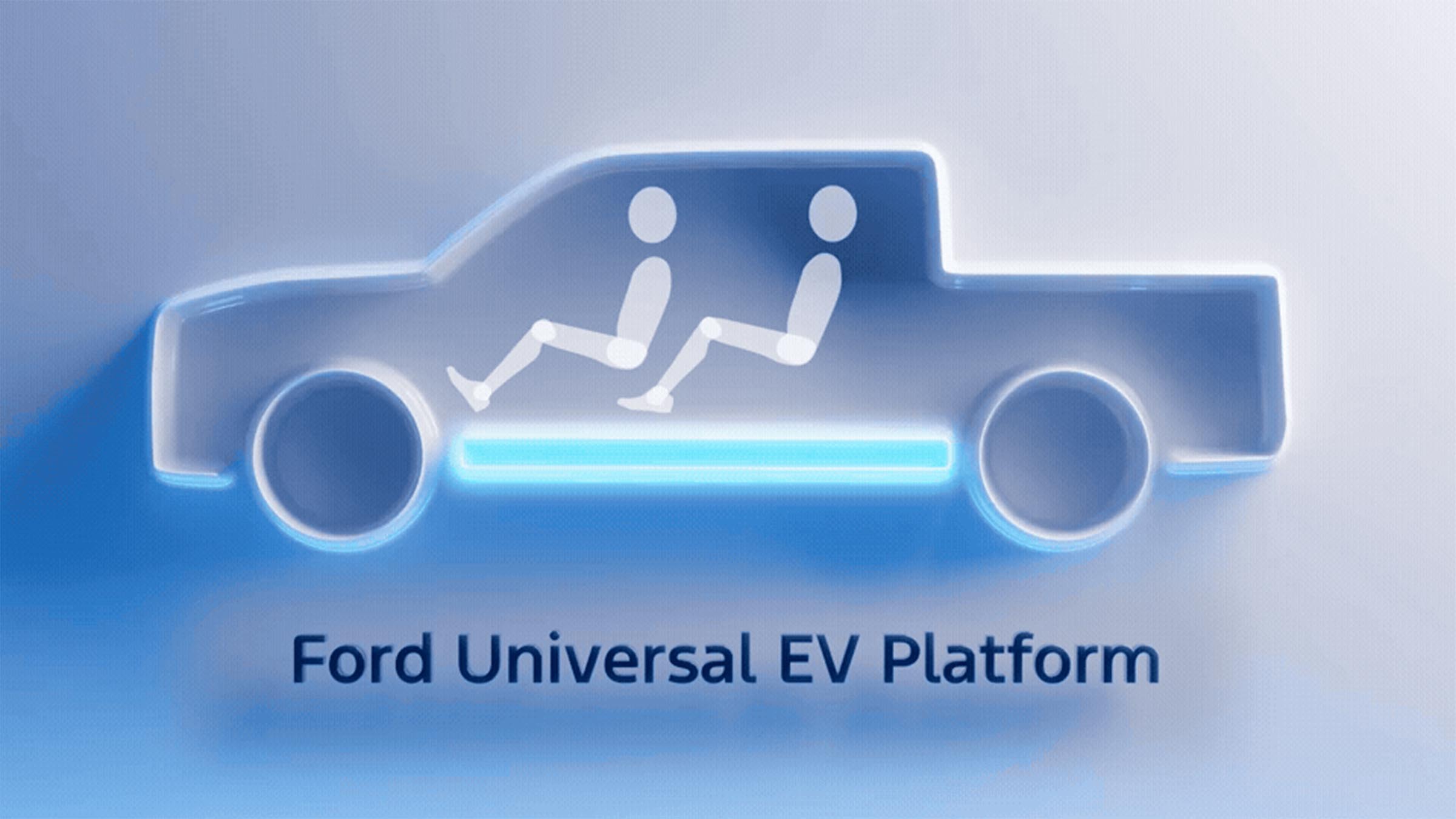
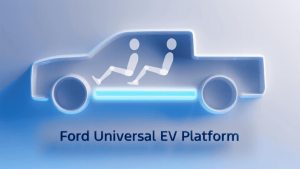
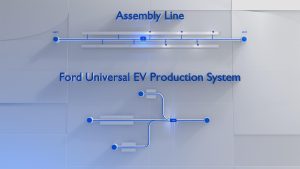

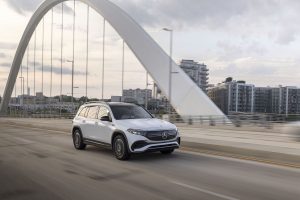
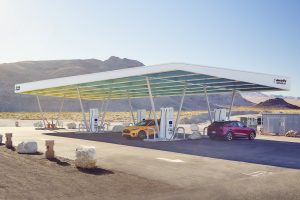
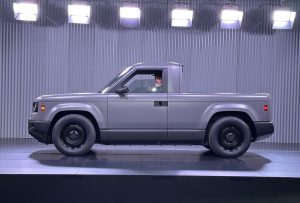


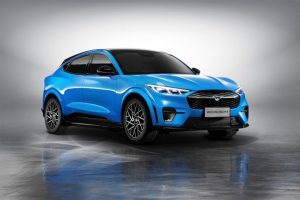
0 Comments